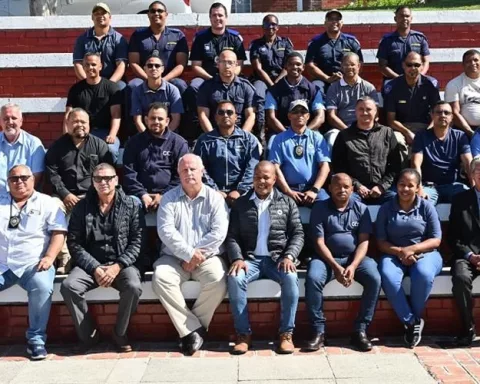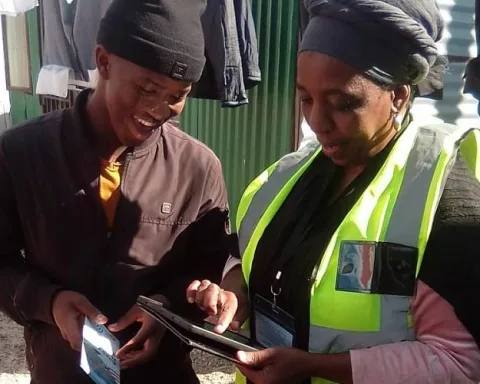Unrest erupted in Vredenburg as the community demanded justice for a missing six-year-old boy. The crowd outside the courthouse grew increasingly agitated, resulting in chaos and injuries as the police responded with rubber bullets and stun grenades. The incident will be investigated, with video evidence playing a crucial role while the disruption caused a delay in court proceedings, highlighting the impact of the community’s battle for justice.
Unrest erupted in Vredenburg as the community demanded justice for a missing six-year-old boy. The crowd outside the Vredenburg Magistrate’s Court grew increasingly agitated as they felt overlooked and attempted to gain access to the court proceedings. The police responded with rubber bullets and stun grenades, resulting in chaos and injuries. The incident will be investigated, with video evidence playing a crucial role. The disruption caused a delay in court proceedings, highlighting the impact of the community’s battle for justice.
In the usually tranquil town of Vredenburg, an unexpected commotion erupted on a Wednesday morning, breaking the community’s serenity. The streets bristled with agitated locals who locked horns with the police force outside the Vredenburg Magistrate’s Court. This collective ensemble’s primary demand was justice for a six-year-old boy named Joshlin Smith, who had mysteriously disappeared.
The focal point of the unrest was the court’s exterior, where the missing child’s mother and three other suspects were due for their second hearing regarding bail. The typical calm ambience of the courthouse had been replaced with an atmosphere resembling a fortress under attack. To manage the growing crowd, the building was surrounded by threatening coils of barbed wire.
The crowd, composed of a significant fraction of Vredenburg’s population, was fuelled by a sense of perceived injustice. Hundreds of locals insisted on being privy to the court proceedings, but the police, focused on maintaining peace, held the crowd at bay. This situation resulted in a tangible tension that was as tangible as the tear gas that would soon envelop the area.
Spiraling Tensions and the Power Struggle
The assembled crowd’s dissatisfaction with the police’s handling of the case was increasingly apparent. They felt overlooked and began to express their discontent not only verbally but also physically by hurling stones. The situation escalated when the police resorted to firing rubber bullets and deploying stun grenades in an attempt to scatter the crowd demanding justice for young Joshlin.
The protesters consisted of various groups, including a faction led by the local Patriotic Alliance (PA) leader Ashley Sauls, popularly known as ‘Oom Biza.’ Sauls’ attempts to gain access to the court were unsuccessful, and his claims of having the necessary paperwork were dismissed. This refusal to allow him entry amplified the crowd’s frustration, resulting in chants of ‘let Biza in’ echoing around the courthouse.
The already tense atmosphere escalated to chaos as some town members attempted to pull down the barbed wire fence, provoking a response from law enforcement. The courthouse, typically a symbol of justice, was ironically transformed into a battlefield between the police and the community, with both parties firmly believing they were justified.
The Role of Social Media and the Aftermath
The situation was further fueled by concerns over ‘TikTok influencers’ present in the court, whose removal exacerbated the already heated situation. The unfolding drama, broadcasted to the world, illustrated a vivid picture of unrest and resistance, with the courthouse serving as both the backdrop and the emblem of the conflict.
Reagen Allen, Western Cape MEC for Community Safety, verified that a police officer was injured during the chaos, struck by a stone thrown from the crowd. This unfortunate incident has prompted an inquiry, with the aim of holding the perpetrators accountable. The power of video evidence will be crucial in this investigation, providing visual documentation of the day’s unruly incidents.
The intense confrontation resulted in significant disruption to the court proceedings, causing a delay of over an hour. As the dust started to settle, the impact of the day’s events was apparent. This day will undoubtedly be imprinted in the minds of Vredenburg and its residents. Their battle for justice reflects a broader, universal battle, one that is fought every day in different parts of the world.
1. What was the cause of the unrest in Vredenburg?
The unrest in Vredenburg was caused by the community’s demand for justice for a missing six-year-old boy named Joshlin Smith.
2. How did the police respond to the crowd outside the court?
The police responded to the crowd outside the court with rubber bullets and stun grenades, resulting in chaos and injuries.
3. Why did the crowd feel overlooked by the police?
The crowd felt overlooked by the police due to their dissatisfaction with the police’s handling of the case.
4. Who led one of the factions of protesters?
One of the factions of protesters was led by local Patriotic Alliance (PA) leader Ashley Sauls, also known as ‘Oom Biza’.
5. What was the impact of the unrest on court proceedings?
The unrest caused a delay in court proceedings for over an hour.
6. What is the aftermath of the incident?
An inquiry has been launched to investigate the incident and hold perpetrators accountable. The impact of the community’s battle for justice highlights a universal battle fought every day in different parts of the world.










